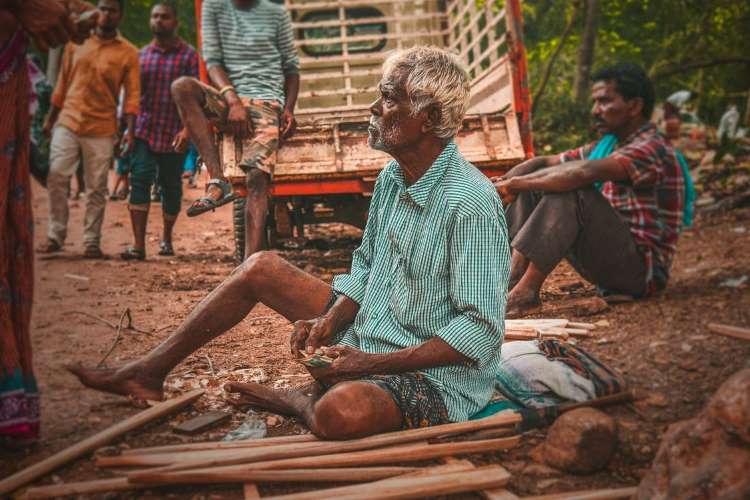
The Indian economy has been facing a slump for some years. Even before the Covid-19 pandemic hit the country in early 2020, the economy was slowing down. The rural economy, a major driver of consumer demand, has been showing signs of weakness for years. The problems such as an FMCG slowdown, fall in tractor sales, and decline in consumer spending still persist. The conversation has now moved on to rising demand for work under MGNREGA and the participation of vulnerable age groups such as elderly and children in the workforce. Collectively, all this mean big trouble for the economy.
While rising employment rate is a good sign for the economy, it is not so for the rural economy. Amid the positive employment numbers, a brewing rural distress remains hidden from plain sight. The latest employment data from the Periodic Labour Force Surveys (PLFS) reveal that the last four years have weighed heavily on rural India, forcing children, women, and elderly to join the workforce to support their families. Other evidence also corroborates a deepening of rural distress.
READ I Multidimensional Poverty: Niti Aayog report points to need for course correction
Looking at the employment data, it can be ascertained that while there is a jump in overall employment. A deeper look at the sectors and population segments that saw an increase in employment suggests that a large part of the growth has been distress-driven.
Between 2017-18 and 2020-21, the total increase in employment stood at 82 million. However, more than 60% of this increase is because of the influx of women in work force. More than half of this increase was in agriculture, reversing a trend since 2004-05. A significant jump was also witnessed in participation from younger age cohorts and the elderly. These age groups, clubbed with women, are being pushed to work because of a dramatic fall in household incomes.
What is being witnessed currently is not unprecedented. Similar trends were observed during the last major distress in the rural economy. This was between 1999-00 and 2004-05. Chief Economic Advisor V Anantha Nageswaran recently wrote on the phenomenon stating that much of the increase can be traced to self-employment with a decline in the share of regular and wage workers.
The data from the Mahatma Gandhi National Rural Employment Guarantee Scheme is also worrisome. MGNREGS numbers have been indicators of the economic health in rural areas. The latest data also points towards a rural distress. The share of the poorest five states — Odisha, Assam, Jharkhand, Uttar Pradesh and Bihar, the work demanded under MGNREGA has increased while in the case of the richest states, it has declined.
Relevance of MGNREGA data in assessing rural distress
If more people demand work under MGNREGA, that means fewer people have jobs or supplementary incomes. Analysts and policymakers have interpreted the rise in the demand for work under the scheme as a rise in economic distress. Moreover, MGNREGA playouts and private market wages have a wide gap. In almost every state, wages under MGNREGA are two-thirds of the corresponding market wages. In some states, the scheme pays even less. So, it is only in cases of extreme distress that households opt for working at wages that are lower than market rates.
Conflicting views
Amid the coronavirus pandemic, the agriculture has emerged as the only sector that showed resilience. Most of rural India depends on agriculture for primary income. Data from the rural sector was heartening in 2021-22 with farm exports crossing $51 billion.
The importance of the agricultural sector can be understood from the fact that it accounts for around 14% of the country’s economy and a third of total employment. Further, while FY 2020-21 saw one of the worst contractions ever in the Indian economy. The National Statistical Office pegged the growth in real gross value added for 2020-21 at negative 6.2%, but the farm sector (agriculture, forestry & fishing) grew by 3.6%.
READ | Invisible workers: Durga Puja artisans face socio-economic deprivation
Rural India stood firm at a time of great chaos and the long-overlooked sector proved how crucial it is for the India story. While the sector faced issues on the demand front with the lockdown affecting out-of-home consumption, the problems have started to ease. What the government needs to ensure now is that issues linked to availability of intuitional credit and market linkages are addressed. There is also a need for a planned approach to expand irrigation network.
The government also could take steps to encourage farmer producer companies that may help address rural distress. FPCs allow farmers to pool resources to achieve scale and enjoy better market linkages.
